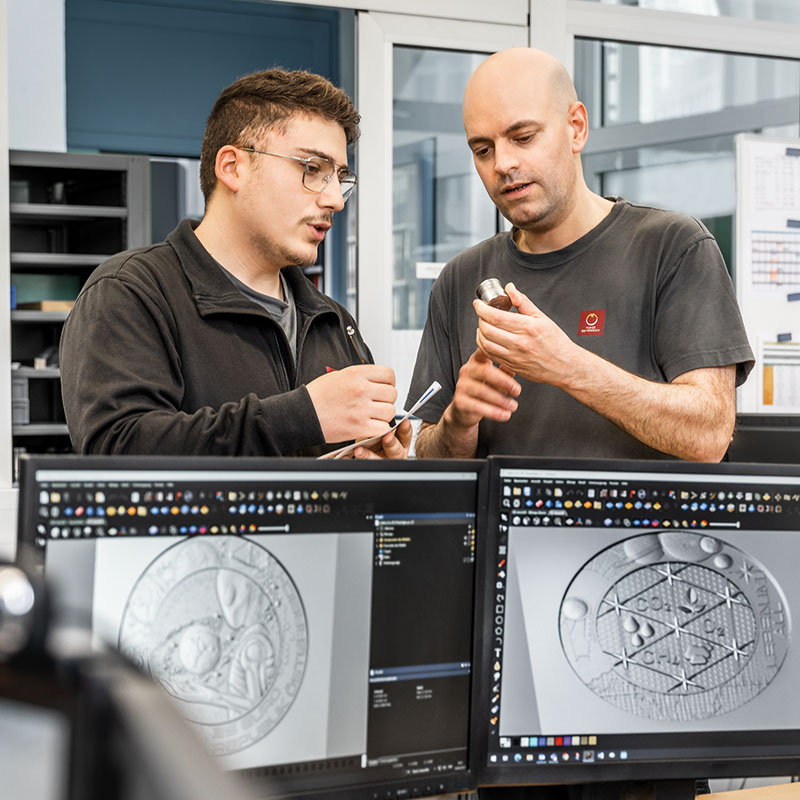Toolmaking
The production of collector coins consists of three main steps:
the production of the minting die in the toolmaking department; the preparation of the die by grinding and polishing; and the minting of special coins using a toggle press with up to 200 tons of minting pressure. In toolmaking, precision and cleanliness are paramount. First of all, the plaster model produced in the engraving department is scanned using digital technology and the die is then precision-milled true to the original with the help of a milling cutter.
When engraving and toolmaking are satisfied with the result, the dies are prepared. Precise grinding and polishing of the tools influence the quality of a coin to a considerable extent.
Finally, on the shop floor, everything depends on the optimum configuration of the minting pressure, pressure distribution, and the position of the minting image. The test die is used to determine the quality of the strike and to enable further production of master dies.
How does a project get underway in the toolmaking department? Does the engraving department come to you with a drawing and then you discuss its technical feasibility?
Alexander Sulzer: We get sketches showing what the shape should roughly look like. My task was to define the basic shapes. The main thing was to create shapes that can be minted. It’s very important that the shapes are mathematically and geometrically flawless.
Are unusual coin shapes such as those in The Uncharted Universe series a big challenge?
Ivan Baotic: The collaboration with the engravers was very intensive in this case. The engravers had a clear idea of what they wanted and we contributed the technical aspects to make it possible. A lot of coordination meetings were necessary, but it worked out very well.

Alexander Sulzer: Our task is to construct the die. For the special coin shapes, we incorporated all the technology available to us, sometimes working with three or four different design programmes to translate the shape into 3D. It was also interesting for me to see what it means to mount a motif on a prefabricated mould.
How exactly do you proceed?
Alexander Sulzer: Our task was to create coins with spectacular shapes and that's where we pushed the boundaries of what was physically possible. Our boss, Heinz Waldhäusl, has 30 years of minting experience and gave us invaluable advice because he has an eye for such things. His experience, the coordination with the engraver, our work with the design programmes – the combination of all this resulted in these spectacular shapes.
Ivan Baotic: The great thing about our department is that every idea is welcome and that's how the end product was able to come about.
The engravers make a sketch and you construct 3D models with the help of a computer. Are these 3D models then transferred to a die?
Alexander Sulzer: Once we've designed the shape and everyone thinks it looks good on the screen, we print the shape on the 3D printer. Seeing the coin on the big screen is very different from hol - ding it in your hand in its original size. The look and feel are essential elements, because it has to appear valuable.
Do you collaborate with other departments as well?
Ivan Baotic: After our prototype is finished, we go with our boss to the shop floor for the test strike. There, together with our colleagues from other departments, we test how much pressure is required to achieve the best strike. The coin is then examined under a magnifying glass to make sure that everything is well struck. Then we go back to the engravers with the test strike for their approval.
You can read the entire interview in the 2022 Annual Report.